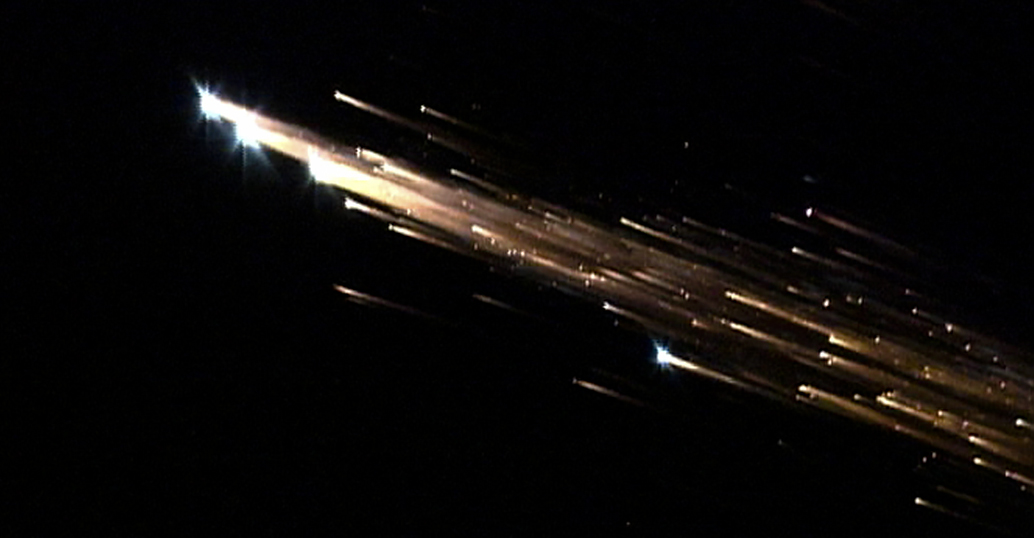Re-entry Safety
Re-entry Safety covers all aspects concerning human health and environment related to planned or unplanned re-entries of any human-made space object.
The ESA Space Debris Mitigation Policy includes a section with instructions to manage risks associated with re-entry of space systems.
Re-entry Safety shall foresee design and operation requirements, verification requirements, and procedures covering and preventing their associated risk related to:
- Impacting debris
- Floating debris
- Hazardous substances
- Radioactive substances
Re-entry Safety was for a long time neglected under the wrong assumption that any re-entering object, including massive spacecraft, can always completely demise when not performing non-destructive controlled re-entry.
Some facts are reported here to draft the picture:
- Every year hundreds of objects including spacecraft, rocket bodies, and debris re-enter the Earth atmosphere, and, among these, several tens of large objects annually represent a hazard to human population, marine and air traffic since about 10-40% of their mass can survive and reach the ground with dangerous kinetic energy.
- In the last 10 years at least 6 launches were terminated by the launch range safety officer to prevent risk for the public. Several more cases of launchers which did not make it to orbit and crashed back on Earth
- The Shuttle Columbia accident in 2003 posed a serious risk to civil aviation (in the order of 1/1000 for commercial airlines and 1/100 for general aviation).
- A Proton launcher failure in September 2007 contaminated a vast swath of agricultural land of Kazakhstan with 200 tons of toxic fuel.
Table 1: Major re-entry events by mass as of 2015 (excluding about 100 Space Shuttle and a Buran controlled re-entries)
OBJECT
AGENCY (COUNTRY)
RE-ENTRY MASS (kg)
DECAY EPOCH
TYPE
MIR
ROSCOSMOS (RUSSIA)
120,000
23-Mar-2011
Controlled
Columbia (STS-107)
NASA (USA)
82,000
1-Feb-2003
Uncontrolled
Slylab
NASA (USA)
74,000
11-Jul-1979
Semi-Controlled
Salyut 7 / Cosmos 1686
ROSCOSMOS (RUSSIA)
40,000
7-Feb-1991
Semi-Controlled
Salyut 6 / Cosmos 1267
ROSCOSMOS (RUSSIA)
34,000
29-Jul-1982
Controlled
Cosmos 1870
ROSCOSMOS (RUSSIA)
20,000
29-Jul-1989
Controlled
Cosmos 929
ROSCOSMOS (RUSSIA)
19,800
2-Feb-1978
Controlled
Cosmos 1443
ROSCOSMOS (RUSSIA)
19,800
19-Sep-1983
Controlled
Salyut 5
ROSCOSMOS (RUSSIA)
18,800
5-Aug-1977
Controlled
Salyut 4
ROSCOSMOS (RUSSIA)
18,700
2-Feb-1977
Controlled
Almaz 1
ROSCOSMOS (RUSSIA)
18,550
17-Oct-1992
Controlled
Salyut 1
ROSCOSMOS (RUSSIA)
18,300
11-Oct-1971
Controlled
Salyut 2
ROSCOSMOS (RUSSIA)
18,300
28-May-1975
Uncontrolled
Salyut 3
ROSCOSMOS (RUSSIA)
18,300
24-Jan-1975
Controlled
Cosmos 557
ROSCOSMOS (RUSSIA)
18,300
22-May-1973
Uncontrolled
Apollo 5 Nose Cone
NASA (USA)
17,100
30-Apr-1966
Uncontrolled
Apollo 6 CSM BP-13
NASA (USA)
16,900
1-Jul-1964
Uncontrolled
Apollo 7 CSM BP-15
NASA (USA)
16,700
22-Sep-1964
Uncontrolled
Apollo 10 CSM BP-9
NASA (USA)
16,700
22-Nov-1975
Uncontrolled
Apollo 9 CSM BP-16
NASA (USA)
16,700
20-Jul-1985
Uncontrolled
Apollo 8 CSM BP-26
NASA (USA)
16,700
8-Jul-1989
Uncontrolled
ATV-4
ESA
15,750
2-Nov-2013
Controlled
CGRO
NASA (USA)
14,910
4-Jun-2000
Controlled
Casualty risk
The ESA Space Debris Mitigation Policy establishes that the re-entry of a spacecraft or launch orbital stage (or any part thereof) shall comply with the maximum acceptable casualty risk. For ESA space systems, the re-entry casualty risk shall not exceed 1 to 10,000 (10-4) for each re-entry event (controlled or uncontrolled).
If the maximum re-entry casualty risk is larger, uncontrolled re-entry is not allowed and ESA missions shall perform controlled re-entries such that any space debris falls outside inhabited areas.

ATV-1 reentry (Credits: Courtesy of ESA)
A re-entry casualty risk analysis shall be performed to verify the compliance, especially regarding the most recurrent issue with impacting debris.
This analysis includes:
- Re-entry Trajectory
- Characteristics of fragments surviving to ground (mass, size, and material)
- Casualty Area of each fragment
- Total Casualty Area
- Total Casualty Probability to Population (Casualty Risk)
- Declared Re-entry Area (DRA) and Safety Re-entry Area (SRA)
The re-entry casualty risk analysis shall take into account all the re-entry related uncertainties both related to the space environment as atmospheric density, and the spacecraft design and operations as position and manoeuver errors.
In order to minimize fragments surviving re-entry, Design for Demise techniques may be a solution.
These design techniques are based on the intentional design of spacecraft hardware such that it will ablate (demise) upon atmospheric re-entry during post-mission disposal.
In case of controlled re-entry or particularly hazardous re-entries, a re-entry notification plan and a retrieval plan are also required.
ESA Re-entry Safety Regulation
- Policy: ESA Space Debris Mitigation Policy for Agency Projects - 28/03/2014
- Standards (Requirements): ESSB-ST-U-004 - ESA Re-entry Safety Requirements - 04/12/2017
- Handbooks: ESSB-HB-U-002 - ESA Space Debris Mitigation Compliance Verification Guidelines - 19/02/2015

